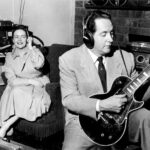Starting your guitar journey is exciting, but let’s face it, holding a guitar correctly feels anything but natural at first. If you’re struggling with your thumb or hand position, you’re definitely not alone. Most beginners encounter these challenges because playing the guitar uses hand muscles and positions unlike anything in our daily routines. The good news? Like any new skill, mastering guitar hand positions comes with practice and the right approach. Think of these initial steps as crucial Guitar Drills For Beginners, building the foundation for comfortable and efficient playing.
Understanding Your Thumb’s Role in Guitar Drills
Many initial difficulties with hand positioning actually stem from incorrect thumb placement. It’s not about brute strength, but about developing dexterity and muscle memory in your hand. Your brain plays a vital role here, acting like a personal trainer for your fingers. Just as a trainer guides you through exercises until you build strength, your brain needs to guide your hand movements until they become natural and ingrained. Repetitive guitar drills for beginners are key to this process.
Think about training for any sport. The exercises for tennis are different from those for weightlifting. Similarly, our hands are conditioned for everyday tasks. Playing guitar requires re-conditioning these muscles for a new set of movements. Therefore, focused guitar drills for beginners, particularly those addressing thumb and hand posture, are essential to overcome these initial hurdles and ensure proper technique from the start. Addressing your thumb position through specific drills will positively impact every other aspect of your hand posture on the guitar.
Palm Position and Knuckle Alignment: Key Guitar Drills for Beginners
For effective guitar drills, especially when focusing on hand positioning, maintaining a flat palm is crucial. Beginners sometimes practice exercises with their palm at an angle, but a flat palm is vital for achieving a rounded pinky finger. Why is a rounded pinky important? Imagine holding a heavy bag at arm’s length. It’s much easier when you curl your arm and bring the weight closer to your body. Guitar strings have tension, similar to lifting a weight. A rounded pinky, achieved with a flat palm, brings the fingertip closer to the knuckle, providing leverage and strength to press down on the strings effectively. This is a fundamental element in guitar drills for beginners aimed at finger strength and control.
Furthermore, when practicing guitar drills for beginners, consciously bring your knuckles at the base of your fingers forward, ideally in line with or just in front of the fretboard. This encourages using the tips of your fingers for cleaner notes and improves your reach across the fretboard. As you move across the strings, from the low E to the high E, aim for a straight line from your elbow to the second knuckles of your fingers. This alignment is important for preventing strain and potential discomfort in your wrist, particularly during extended practice sessions of guitar drills for beginners. While initial hand position adjustments are unlikely to cause serious issues, consulting a professional if you experience persistent wrist pain is always recommended. Remember, some muscle fatigue is normal when starting new exercises – it’s a sign you’re working those guitar muscles!
Effective Practice: Mental Bandwidth and Guitar Drills
When incorporating guitar drills for beginners into your practice routine, remember the concept of mental bandwidth. Our focus is limited. If we concentrate too intensely on one aspect of playing, we might neglect others. As we increase the number of things we’re consciously trying to control, our focus on each individual element diminishes. Similarly, speeding up your playing can reduce overall focus.
Therefore, when practicing guitar drills for beginners, especially those focusing on hand position, start slowly and deliberately. Concentrate on each aspect of the drill – thumb placement, palm flatness, knuckle position. Once you can perform the drill correctly and comfortably at a slow pace, gradually increase speed while maintaining focus on proper form. This mindful approach to guitar drills for beginners will maximize your learning and ensure you develop solid, lasting technique. Consistent, focused practice with these fundamental guitar drills will pave the way for confident and enjoyable guitar playing.

